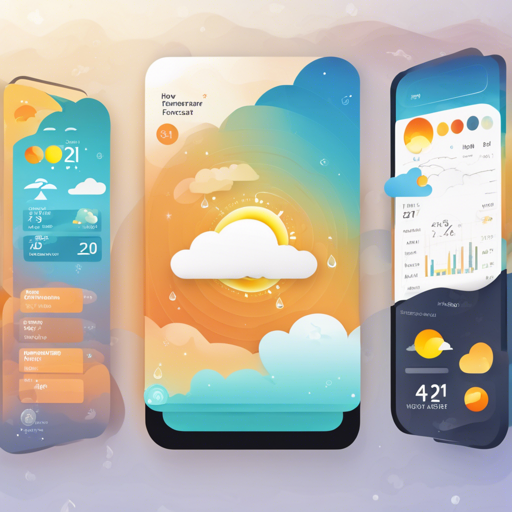Are you interested in creating a weather forecast app that allows users to get real-time weather updates? In this guide, we will walk you through building a simple yet effective weather forecast application using React and the OpenWeatherMaps API. Plus, we will cover some troubleshooting tips to ensure your journey is as smooth as possible!
Overview of the Application
The weather forecast app we’ll build will fetch weather data from the OpenWeatherMaps API. It’s a great way to familiarize yourself with React and interacting with APIs. Once you’re done, you can even deploy it using Netlify.
Prerequisites
- Basic understanding of JavaScript and React.
- An OpenWeatherMaps API key (which you can get for free by signing up at OpenWeatherMaps).
- Node.js and npm installed on your computer.
Step-by-Step Guide to Building the App
1. Setting Up the React App
Start by creating a new React application using Create React App.
npx create-react-app weather-app2. Install Axios
We will use Axios to handle our API calls. Navigate to your app’s directory and install it:
npm install axios3. Create a Weather Component
Create a new component that will handle fetching and displaying the weather data. This involves creating a function that will call the OpenWeatherMaps API with your API key.
import React, { useState } from 'react';
import axios from 'axios';
const Weather = () => {
const [weatherData, setWeatherData] = useState(null);
const [city, setCity] = useState('');
const fetchWeather = async () => {
const response = await axios.get(`https://api.openweathermap.org/data/2.5/weather?q=${city}&appid=YOUR_API_KEY`);
setWeatherData(response.data);
};
return (
setCity(e.target.value)}
placeholder="Enter city"
/>
{weatherData && {weatherData.main.temp}°K}
);
};
export default Weather;4. Display the Weather
The above code snippet sets up a simple user interface to input a city name and fetch its weather. The fetched data is then displayed in the app.
Think of it like asking a librarian for the latest book on a specific topic. You give the librarian the title (city), and they fetch the book (weather data) for you!
5. Styling Your App
You can add CSS styles to make your app look appealing. Consider using CSS frameworks like Bootstrap or Material UI for a professional touch.
6. Deploy Your App
Once you’re satisfied with your app, you can deploy it using Netlify. Just follow these simple steps:
- Sign in to Netlify and link your GitHub repository.
- Choose your project and set build command to
npm run build. - Click deploy!
For reference, you can check out the deployed app here.
Troubleshooting
Here are some common issues you might encounter and their solutions:
- If your weather data isn’t displaying, check if your API key is valid and ensure the city name is spelled correctly.
- Facing issues with deployment? Make sure that your main entry point is correct and there’s no uncaught error in your JavaScript code.
- If the app isn’t working consistently, inspect the console for any errors and ensure you handle them gracefully within your code.
For more insights, updates, or to collaborate on AI development projects, stay connected with fxis.ai.
Conclusion
Congratulations! You have successfully built a weather forecast application using React. This project not only enhances your skills in React but also gives you hands-on experience with APIs and deploying web applications.
At fxis.ai, we believe that such advancements are crucial for the future of AI, as they enable more comprehensive and effective solutions. Our team is continually exploring new methodologies to push the envelope in artificial intelligence, ensuring that our clients benefit from the latest technological innovations.

